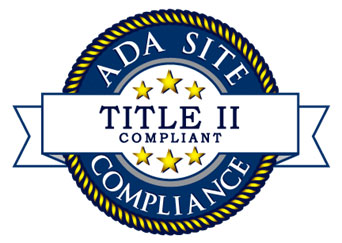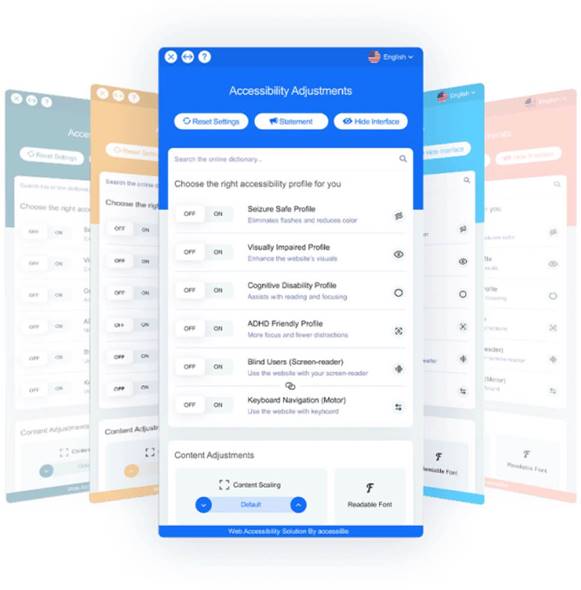The Nation's Most Experienced Full-Service Dental Marketing Agency
ADA Compliant Website
Does Your Dental Website Deliver Profit AND Peace of Mind?
Until recently, most dentists have viewed their website primarily from a new patient generation perspective. The emphasis dentists place on their practice website has been, understandably, effectiveness and performance as it pertains to new patient acquisition. To be sure, there are an ever increasing array of current dental patient-facing website functions such as online scheduling, review generation, bill payment, and forms submission, and patients of record may, depending on content, consult their dentist’s website to learn more about a contemplated procedure.
This last fact makes the importance of an ADA compliant dental website all the more urgent and essential.

Your Dental Website Should Deliver Both Profit
AND Peace of Mind
As many as 27% of adults in the U.S. have some form of disability, according to the Centers for Disease Control and Prevention.

Inaccessible web content means that people with disabilities are denied equal access to information.
Ensuring access to your website for people with disabilities is now a priority!
WCAG compliance is key
Website Content Accessibility (WCAG) Guidelines compliance is a must in today’s litigious world.
AIM’s ADA Website Compliance Service offers the profession’s most reliable system for ensuring your website is optimized for use by Americans with disabilities, which is a great way to demonstrate your caring and sensitivity to the needs of this growing population.

To pay or not to pay
Several web platforms e.g. WordPress offer free accessibility plug-ins. According to an Accessibe spokesperson “[such free] accessibility plugins are basic. They offer accessibility solely from a design standpoint, and only offer compliance with perhaps 20% of WCAG guidelines.” At best, the plugins are considered an overlay in that they only address issues related to color contrast, discernible links, using relative sizing and spacing, appropriate alt text for images, etc. Most overlays just provide tools that are redundant to screen readers and can actually make websites less accessible or more annoying to use for people who need accessibility. In light of this I cannot, in good conscience, recommend relying on these free plug-ins to address compliance issues.
Do it yourself web accessibility evaluation tools list
Web accessibility evaluation tools are software programs or online services that help you determine if web content meets accessibility guidelines.
Among other things, but perhaps most important, the tools help you to identify accessibility barriers. Be advised, however, that not all accessibility checks can be automated. To address this, most accessibility tools offer a checklist, which guide you or your developer through those checks, which cannot be automated. There simply is no substitute for human intervention when it comes to ensuring an ADA- compliant website.
To learn more about web accessibility tools visit: https://www.youtube.com/watch?v=bn1XJSjc_qM&t=3s
If you choose this route to convert your dental website to WCAG 2.1 AA compliance, be sure you or your web developer possess the requisite skill set to implement the updates to your website.

Select from several designs for the menu used by disabled web surfers to set your dental website for optimal personal use.
Your WCAG-compliant website automatically adjusts to better accommodate the needs of people presenting with various impairments related to vision, epilepsy, ADHA, cognitive disability, motor, and hearing.
Compliance adjustments include: cursor color and size, text font and color, animation, contrast, audio muting, and deciphering of phrases, slang and more for those with cognitive disorders.

Our robust system performs ongoing compliance checks to ensure any changes to your dental website are evaluated and addressed.
While no system can guarantee 100% compliance AIM’s ADA Website Compliance Service delivers compliance in excess of 89%, which means your website meets or exceeds current WCAG requirements, providing peace of mind because you are protected from threats of litigation.

AIM’s Litigation Support Package includes:
- Compliance Audit – Code examples and simple illustrations of how your website complies with WCAG 2.1 level AA criteria.
- Compliance Overview – Delineates compliance requirements, demonstrating how your dental website addresses them at the code level.
- Accessibility Statement – A user-facing document, accessed when clicking on the accessibility interface.
- Screenshots Illustrating Compliance – To demonstrate your website meets or exceeds WCAG 2.1 AA standards
- Purchase Invoice – Demonstrates you have an Accessibility Expert on your Team
- And much more
Give Your Website An SEO Boost
Google favors sites that are WCAG compliant. It immediately recognizes that the accessibility widget is present, which satisfies one of its many SEO ranking criteria.
Learn More by completing the form below.

